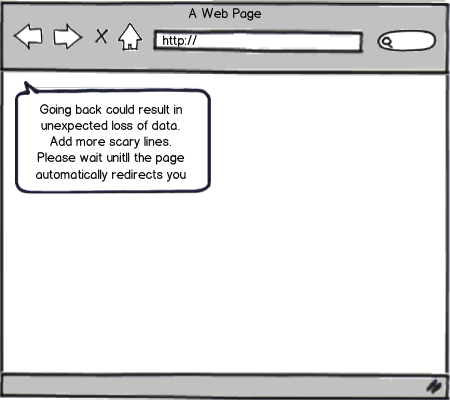Problem: I have a situation where in a browser-based web application the back button (and backspace key for that matter) cannot be supported or used. If it is used, the results can be unpredictable in terms of navigation, taking the user not to their last step to the last URL in the web app (there could be several steps performed within a shell in the UI that does not change the URL). Furthermore, data may be lost. Providing a special chrome or wrapper to hide the back button in the browser is not an option (the user could also use the backspace key which in most platforms and browsers is mapped to the back button).
However, it is completely reasonable that users would want to navigate using the browser back button and expect that it works.
Solution options: What is the optimal UX in this situation? I am thinking that on back button use a warning dialog is thrown saying that the back button is not supported and to navigate using provided previous or next buttons or other affordances in the UI, and to complete tasks without using the back button. Furthermore If used, data could be lost and the navigation may be "unexpected" (not sure how to phrase this elegantly). Perhaps some user assistance on first run would tell users not to use the back button too.
Any opinions on insight on how this limitation (due to JSF architecture by design outside my control) can be elegantly handled? I am of the opinion this is a bug, but it would be better to convey the interaction as warning from a UX perspective rather than an error message.
Anyone got elegant phraseology on how to compose that warning or assist users gently in the right direction?


